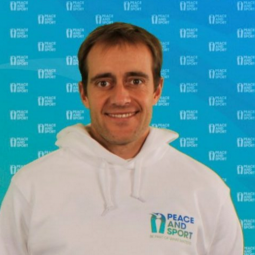Throughout the course of history many athletes have spoken out in favor of social issues. Their actions and commitment have demonstrated that sportspersons can play an important role inciting social change. Today the question is: how can we create effective and structured pathways to motivate and incite more athletes to join?
Athletes are role models for youth. As a mirror of society, they can set an example of a positive behavior at the local, national and international level. In post-conflict areas, they can also provide an informed and healing voice to build bridges for dialogue and understanding.
Mohammed Ali is a great example of a person who made a complete commitment in using his profile to advocate for peace, human rights, justice and inclusion. His refusal to fight in the Vietnam War transcended the boxing ring. At the time he stated: “No, I am not going ten thousand miles from home to help murder and burn another poor nation simply to continue the domination of white slave masters of the darker people the world over.”
Athletes can leave a positive impact at the social level, such as state level or/and private sector. They can push to use those moments to call for action to governments, companies and institutions to participate in developing effective policies, programs and actions for the benefit of all.
It is clear that athletes, who advocate for social change, may never be more needed than today. Now, it is important to improve and develop structured and effective ways for athletes’ participation for social good.
In my experience as a sportsperson, I have seen the willingness of many athletes involving in actions related with development and social change. Many of them want to give something back to the community through the practice of sport. In this sense, organizations, NGO’s, governments and private sector need to use this willingness and include athletes through structured and effective mechanism into sport for development and peace initiatives and programs.
For example, it is necessary to improve communication channels between the organization leading a cause and the athlete. A good and direct communication system between an athlete and organization ensures that the athlete understand the cause, feels identified with it and reinforce the reasons to keep supporting the organization.
It is also important to design effective time schedules balancing the practice of sport -meaning matches and competitions-, the private life and the involvement in social causes. I believe that with a good time management, effective communication channels and commitment, athletes can leave a legacy for future generations.
For the last few months, we have seen on the news several athletes speaking, pushing and calling for action in topics like tolerance, gender based-violence, human trafficking, same-sex marriage and drugs. I also think that public workouts, education and the involvement in community-based activities are valuable contributions that athletes could do for the society.
We are now living in times of great uncertainty. Therefore, it should be everybody’s ambition to contribute to peace, freedom and stability. We all have a chance to do better. We all have a role to play. It is time for athletes to play their part too, inside and outside of the pitch.
